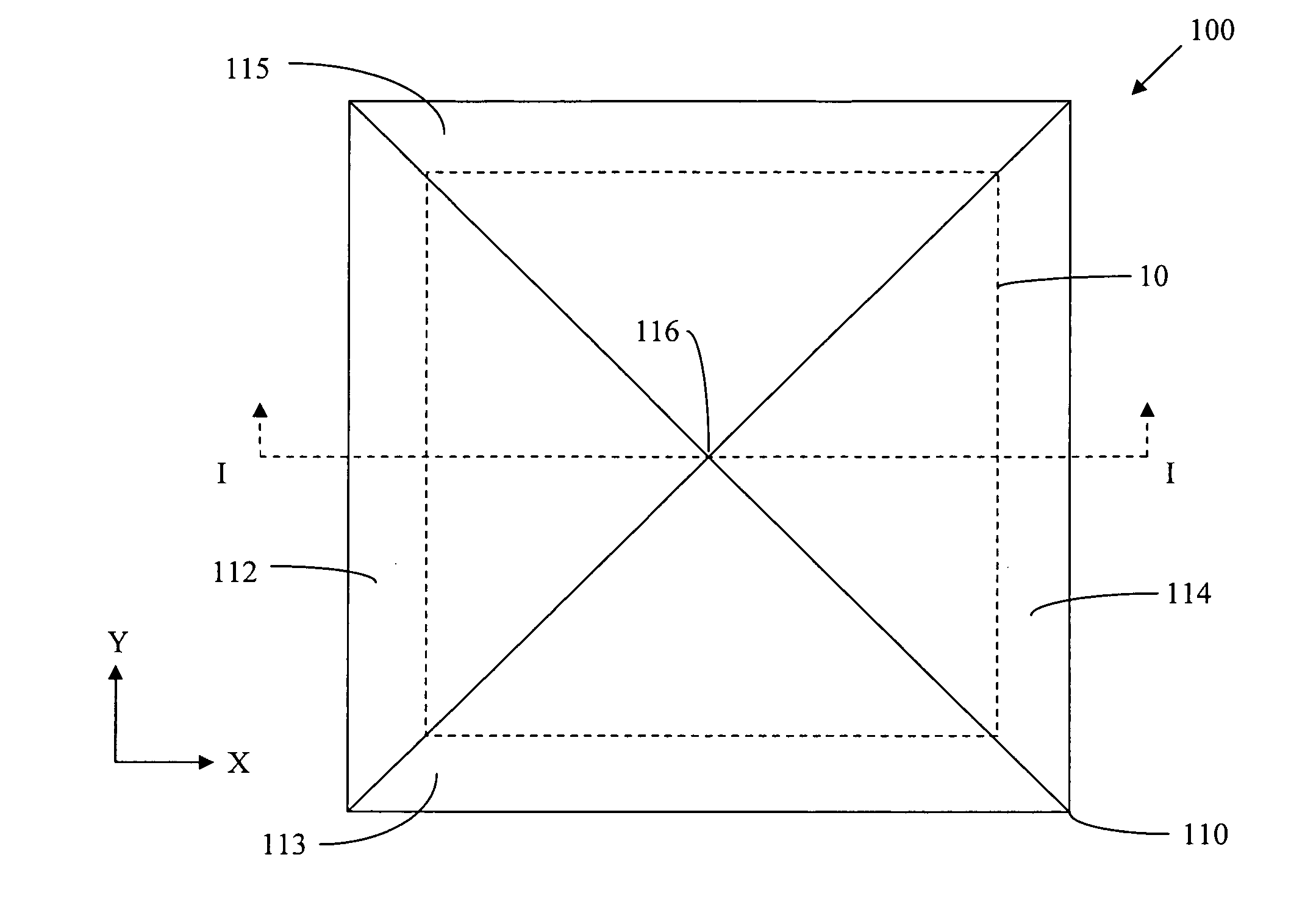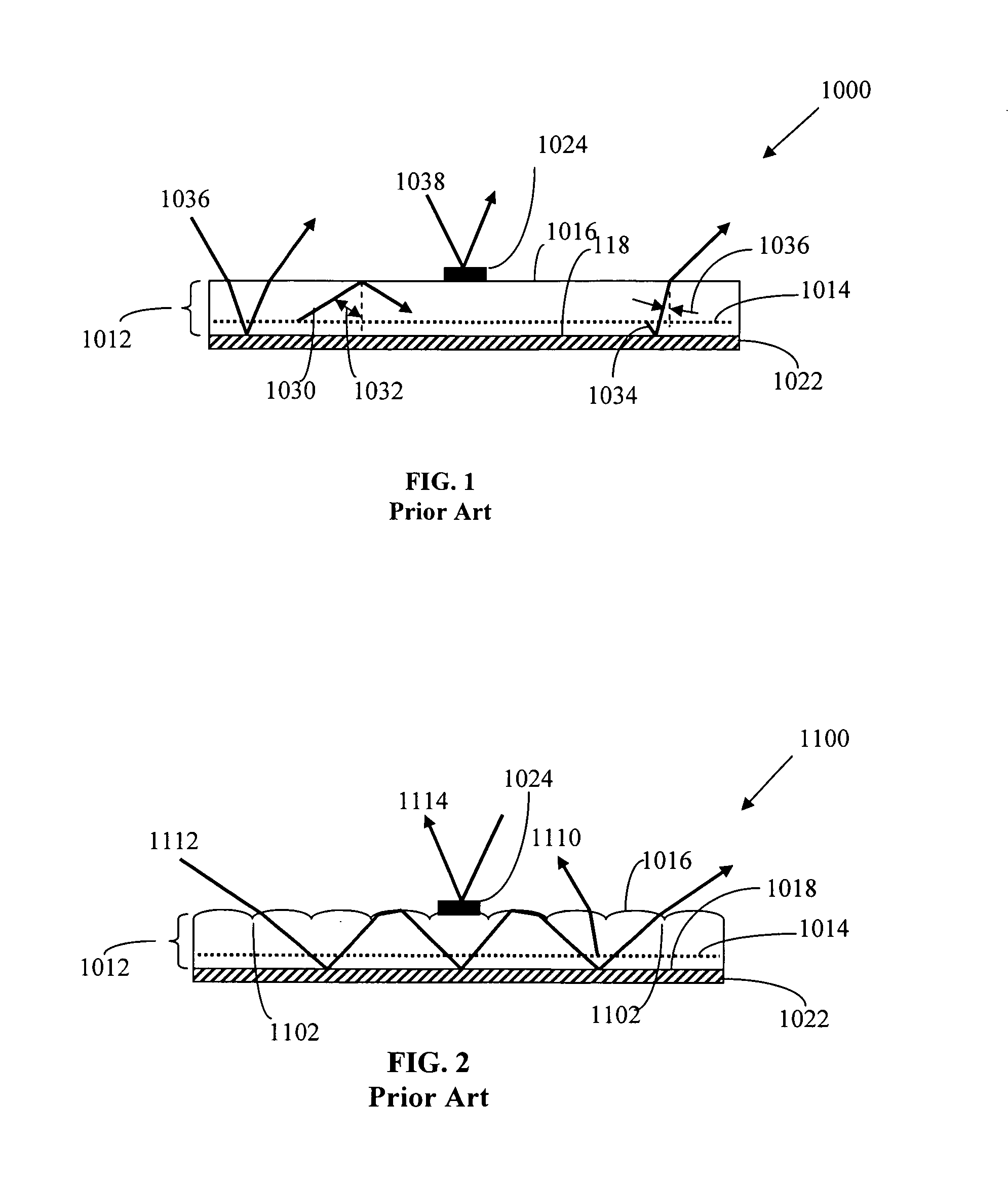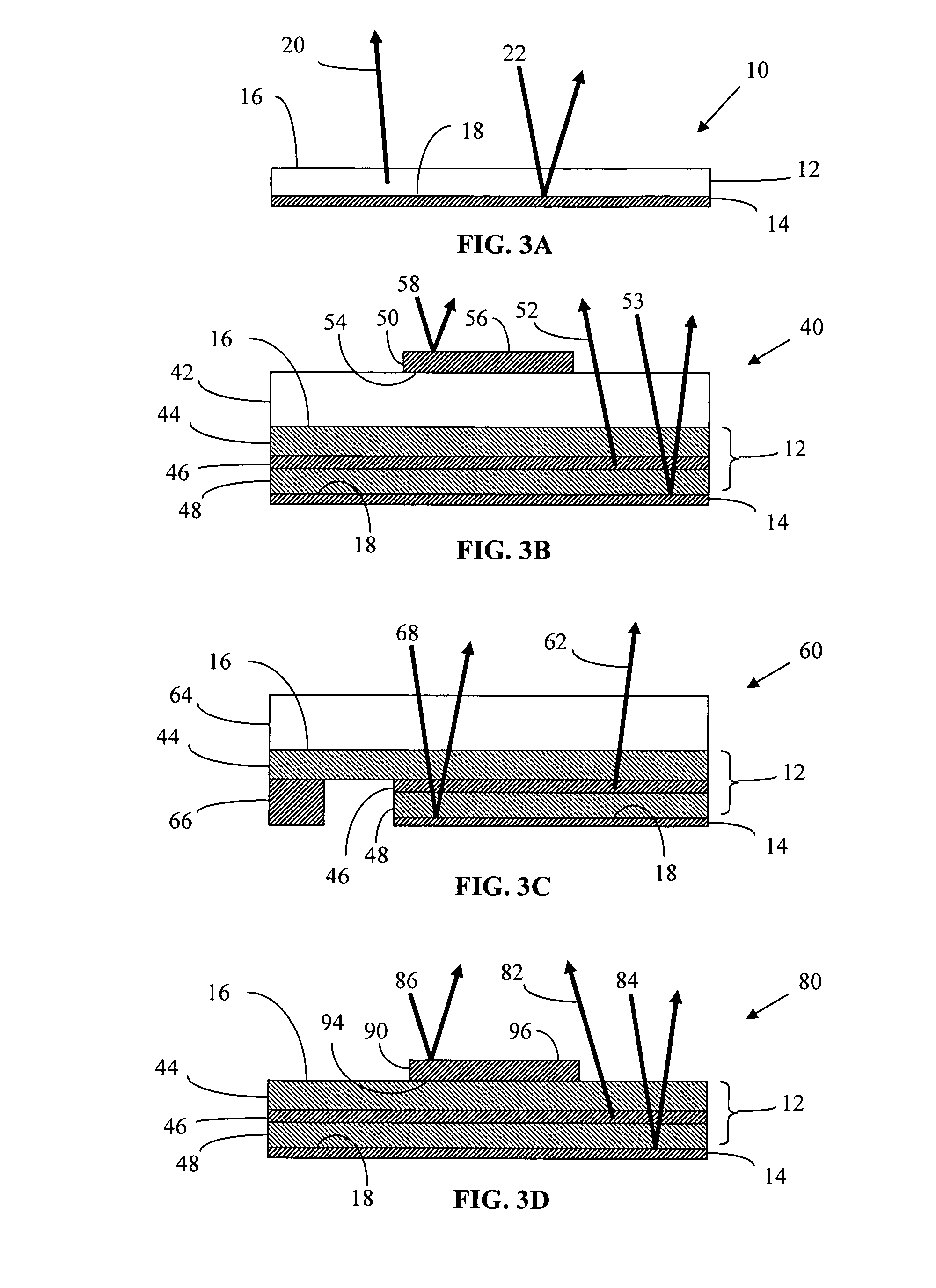Light recycling illumination systems having restricted angular output
a technology of angular output and illumination system, which is applied in the direction of lighting and heating apparatus, semiconductor devices for light sources, instruments, etc., can solve the problems of low external quantum efficiency of internal light, many applications, and low efficiency of leds for internal light generation, so as to increase the effective brightness and output efficiency of illumination system
- Summary
- Abstract
- Description
- Claims
- Application Information
AI Technical Summary
Benefits of technology
Problems solved by technology
Method used
Image
Examples
Embodiment Construction
[0095]The preferred embodiments of the present invention will be better understood by those skilled in the art by reference to the above figures. The preferred embodiments of this invention illustrated in the figures are not intended to be exhaustive or to limit the invention to the precise form disclosed. The figures are chosen to describe or to best explain the principles of the invention and its applicable and practical use to thereby enable others skilled in the art to best utilize the invention.
[0096]An LED of this invention incorporates a multi-layer semiconductor structure that emits light. Inorganic light-emitting diodes can be fabricated from materials containing gallium nitride (GaN), including the materials aluminum gallium nitride (AlGaN) and indium gallium nitride (InGaN). Other appropriate LED materials are aluminum nitride (AlN), aluminum indium gallium phosphide (AlInGaP), gallium arsenide (GaAs), indium gallium arsenide (InGaAs) or indium gallium arsenide phosphide ...
PUM
 Login to View More
Login to View More Abstract
Description
Claims
Application Information
 Login to View More
Login to View More - R&D
- Intellectual Property
- Life Sciences
- Materials
- Tech Scout
- Unparalleled Data Quality
- Higher Quality Content
- 60% Fewer Hallucinations
Browse by: Latest US Patents, China's latest patents, Technical Efficacy Thesaurus, Application Domain, Technology Topic, Popular Technical Reports.
© 2025 PatSnap. All rights reserved.Legal|Privacy policy|Modern Slavery Act Transparency Statement|Sitemap|About US| Contact US: help@patsnap.com



